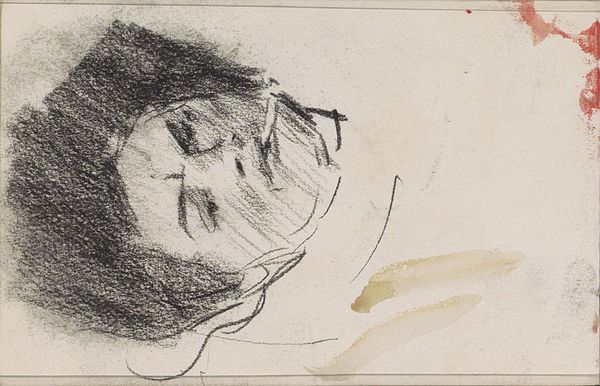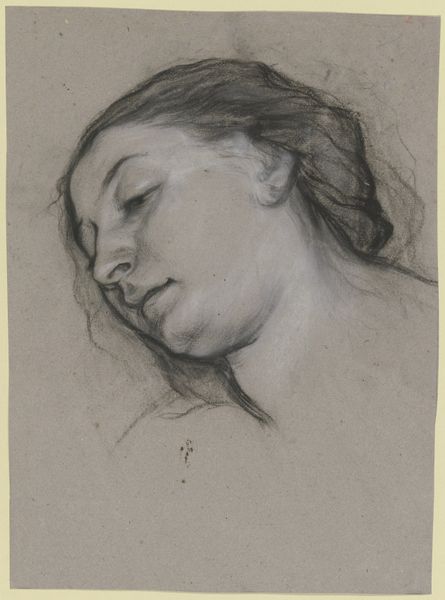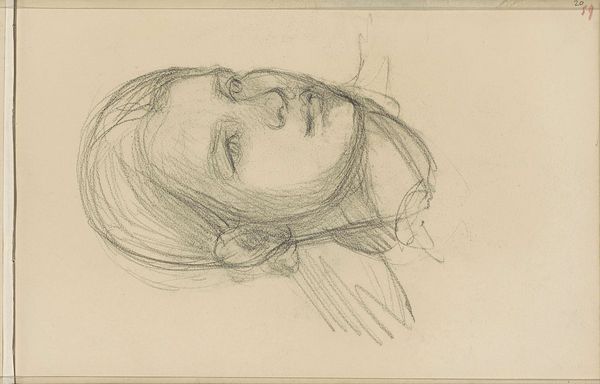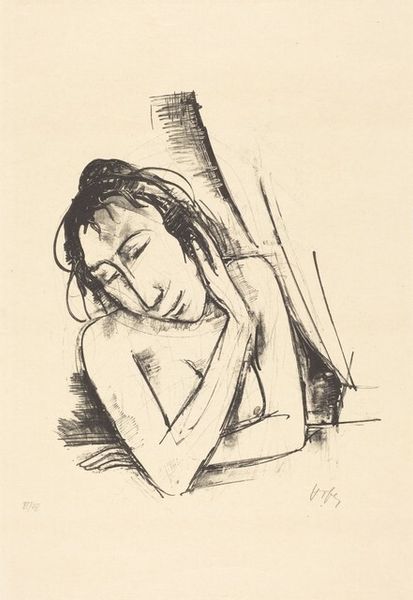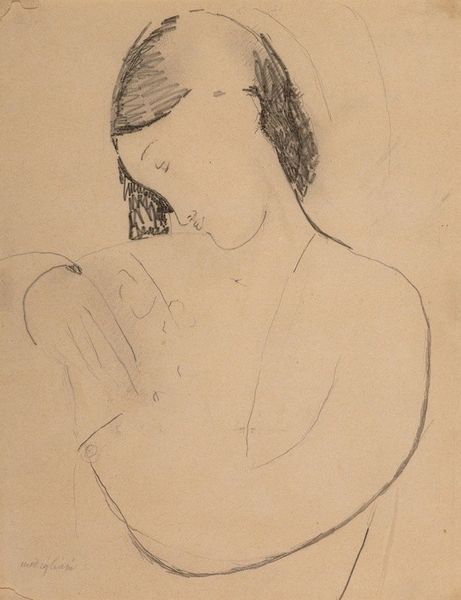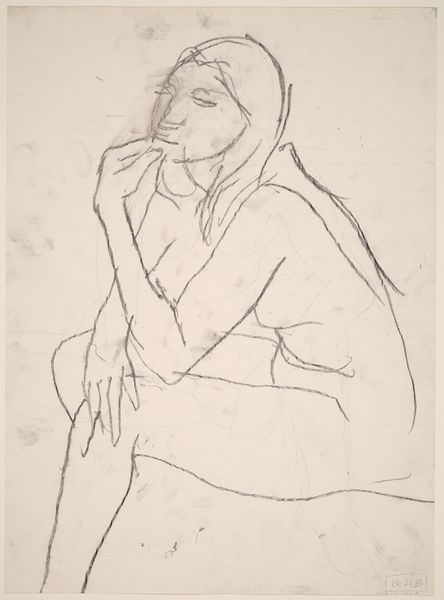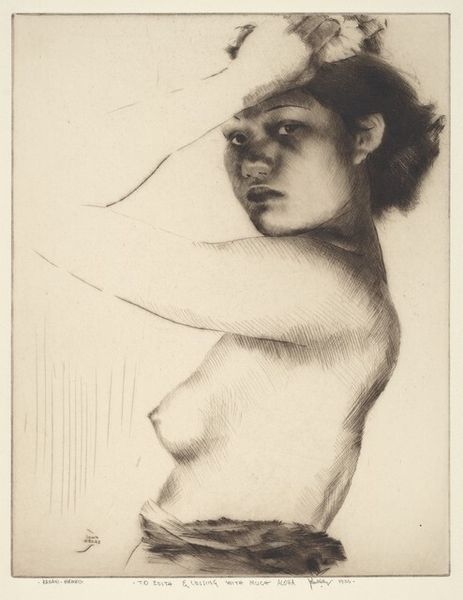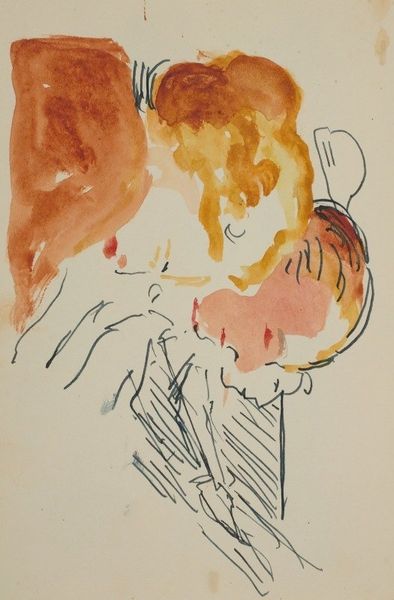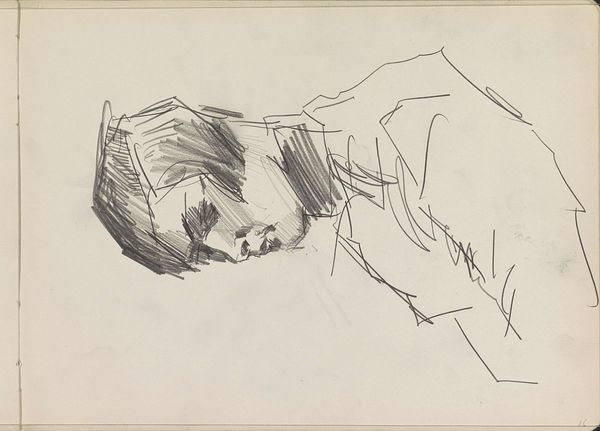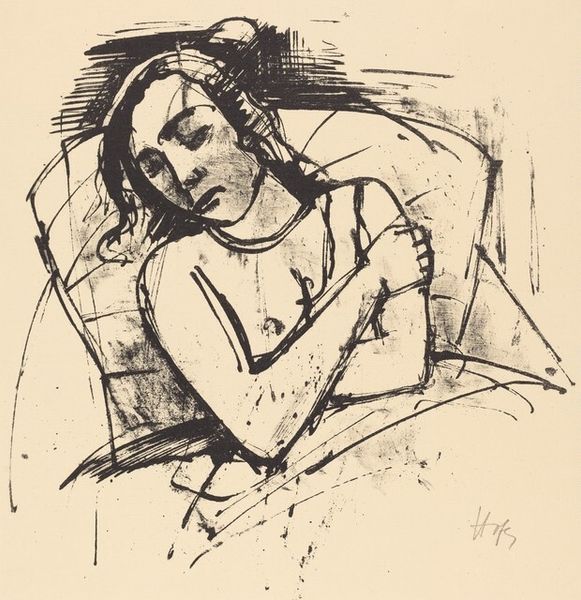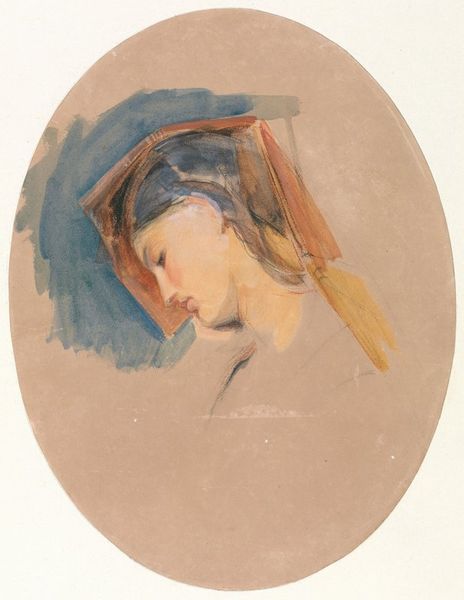
Copyright: Public Domain: Artvee
Curator: This is Helene Schjerfbeck's "Virgin Mary, after El Greco," created in 1942. We're looking at a piece rendered with pencil and watercolor on paper. Editor: There’s a raw, almost haunting quality to this Virgin. She’s introspective, shadowed, lost in thought or prayer maybe? It isn't how I imagine Mary most of the time. Curator: Indeed. Schjerfbeck's rendition deviates from traditional representations, foregrounding the expressiveness of line and form over realistic depiction. The toned paper and light pencil work, as the catalogue description suggests, enhance this. Editor: The way the blue watercolor pools around her… it almost feels like sadness. Or maybe serenity? And those rough pencil strokes—there’s nothing sentimental about it, it’s as though she's stripped everything back. You know what I mean? Like, *this* is what it *feels* like. Curator: It is her adaptation of El Greco's elongated figures and use of expressive color that commands the visual narrative. In her oeuvre, one discerns recurring motifs of introspection, particularly prominent during the wartime setting in which it was created. Editor: So, a response to what's happening in the world around her. A sense of fragility, maybe? Looking to something eternal to keep the chaos at bay. Do you feel that? Curator: One may extrapolate various interpretations. However, if you carefully examine the angularity and deliberately simplified shapes of her work here, its expression lies more precisely in this contrast between artistic re-interpretation and emotive impact. The semiotic encoding of the Madonna allows a range of alternative subjectivities, rather than adherence to any orthodox canon. Editor: I like the semiotics—and her almost punk take on a Renaissance icon. Like, this is my Mary, stripped bare and vulnerable and real. I wonder, did she imagine someone specific when she sketched her like this? Was it someone she wanted to save, even just on paper? Curator: Interesting consideration. Schjerfbeck's "Virgin Mary, after El Greco" offers a rich ground for interpreting personal and formal qualities. Editor: Absolutely. Makes me feel as though anything is possible...re-imagining everything with just a pencil and some watercolor.
Comments
No comments
Be the first to comment and join the conversation on the ultimate creative platform.
